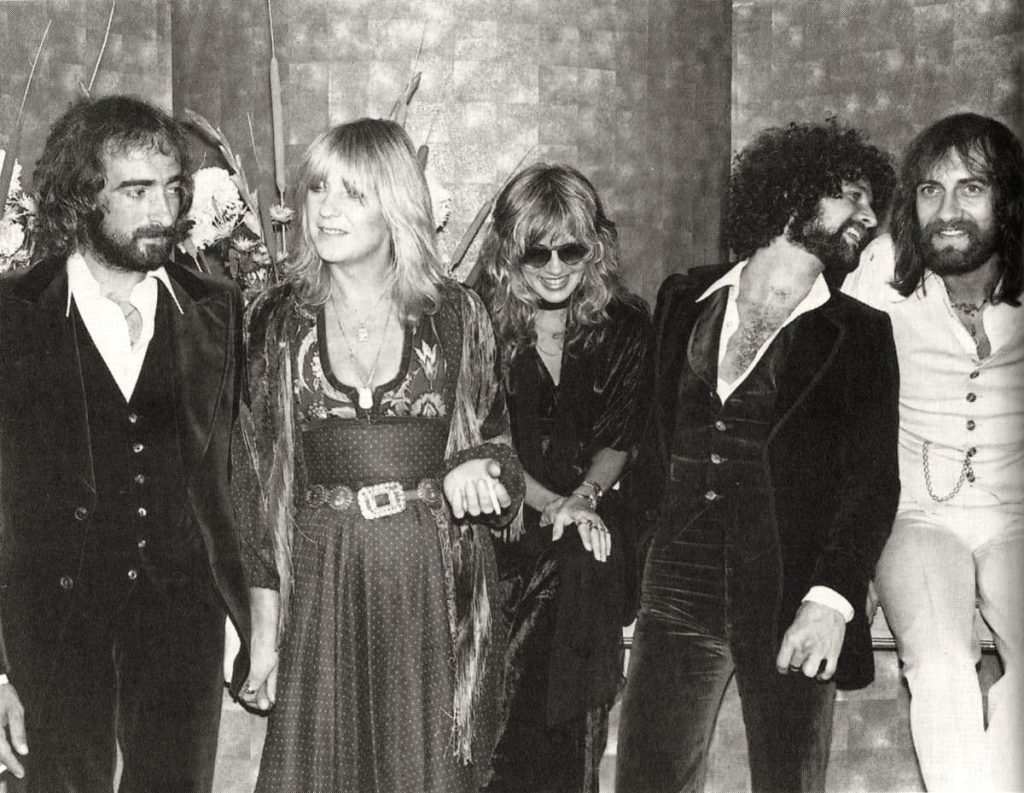
A Poetic Reflection on Change, Freedom, and Nostalgia
“Gypsy” by Fleetwood Mac is a hauntingly beautiful ode to the past, self-discovery, and the enduring quest for freedom. Released in 1982 as the second single from their album Mirage, the song is a showcase for Stevie Nicks’ evocative songwriting and ethereal vocal delivery. It’s a deeply personal track that combines wistful nostalgia with the boundless yearning for a life unconfined by expectations, and it has remained a cornerstone of the band’s repertoire ever since.
From the first notes of Lindsey Buckingham’s delicate, arpeggiated guitar, “Gypsy” casts a spell, drawing listeners into its shimmering world. The arrangement is lush yet understated, allowing Nicks’ voice and lyrics to take center stage. Her vocals glide effortlessly, carrying a blend of vulnerability and strength that captures the song’s emotional complexity.
Lyrically, “Gypsy” is a reflection on Nicks’ own life before the fame and fortune of Fleetwood Mac. The line “So I’m back to the velvet underground” refers to her days of humble beginnings, when she slept on a mattress on the floor, dreaming of a future in music. This imagery is both vivid and universal, evoking the bittersweet longing for the innocence and simplicity of youth. It’s a reminder that even as we achieve our dreams, a part of us yearns for the purity of the journey itself.
At its core, “Gypsy” is a meditation on change and resilience. The gypsy in the song symbolizes freedom and adaptability, a figure who embraces life’s uncertainties with grace and courage. Lines like “To the gypsy that remains / Faces freedom with a little fear” encapsulate this duality, acknowledging both the exhilaration and trepidation that come with forging one’s path.
The production of “Gypsy” is as captivating as its lyrics. Buckingham’s guitar work is intricate yet unobtrusive, weaving a shimmering tapestry of sound. The rhythm section, anchored by John McVie’s bass and Mick Fleetwood’s drums, provides a steady, grounding presence that contrasts beautifully with the song’s ethereal elements. Meanwhile, Christine McVie’s keyboard contributions add layers of texture and warmth, enhancing the song’s dreamlike quality.
The chorus, with its repeated plea “She is dancing away from me now”, carries a poignant sense of loss and longing. Whether it’s the loss of a person, a moment, or an ideal, the emotion is palpable. Nicks’ delivery is imbued with a wistfulness that lingers long after the song ends, making it impossible not to feel the depth of her words.
Upon its release, “Gypsy” resonated deeply with audiences, climbing to number 12 on the Billboard Hot 100 and cementing its place as one of Fleetwood Mac’s most beloved tracks. Its themes of nostalgia and self-reflection, paired with its lush, atmospheric sound, have ensured its lasting impact.
Over the years, “Gypsy” has taken on additional layers of meaning for Nicks and her fans. It’s often interpreted as a tribute to her late friend Robin Snyder Anderson, whose death profoundly affected Nicks during the writing of Mirage. This personal connection adds an even deeper layer of poignancy to the song, transforming it into a tribute not just to the past but to those we carry with us as we move forward.
“Gypsy” is more than just a song—it’s a journey. It captures the essence of Fleetwood Mac at their best: introspective yet universal, delicate yet powerful. Whether it’s the pull of nostalgia, the courage to embrace freedom, or the bittersweet realization of change, “Gypsy” speaks to the heart, offering comfort and inspiration to all who listen. It’s a timeless reminder that, even as we dance away from the past, its echoes remain with us, guiding us forward.